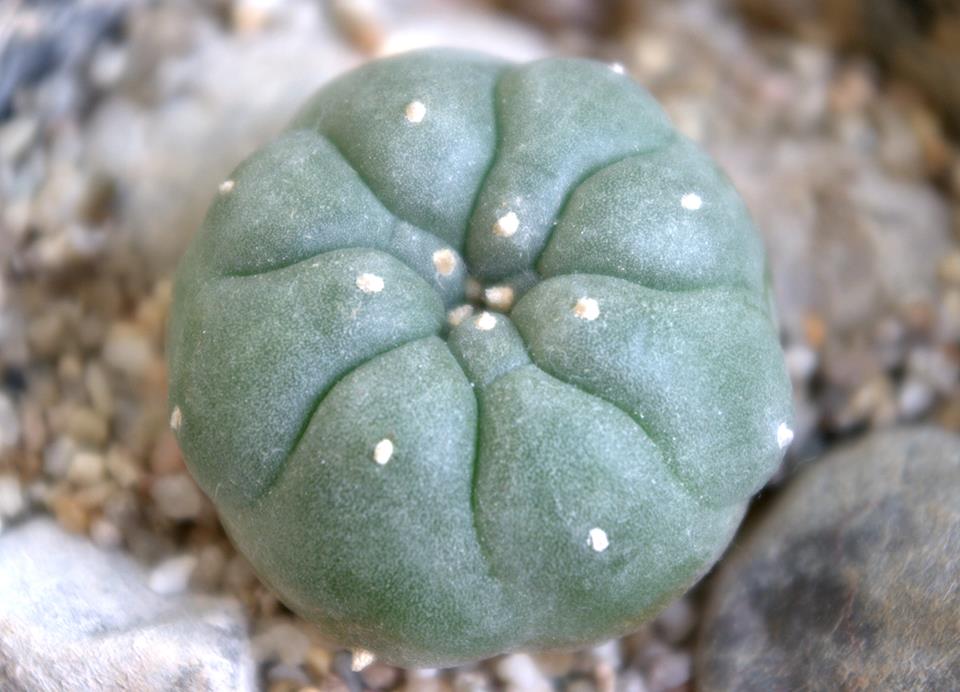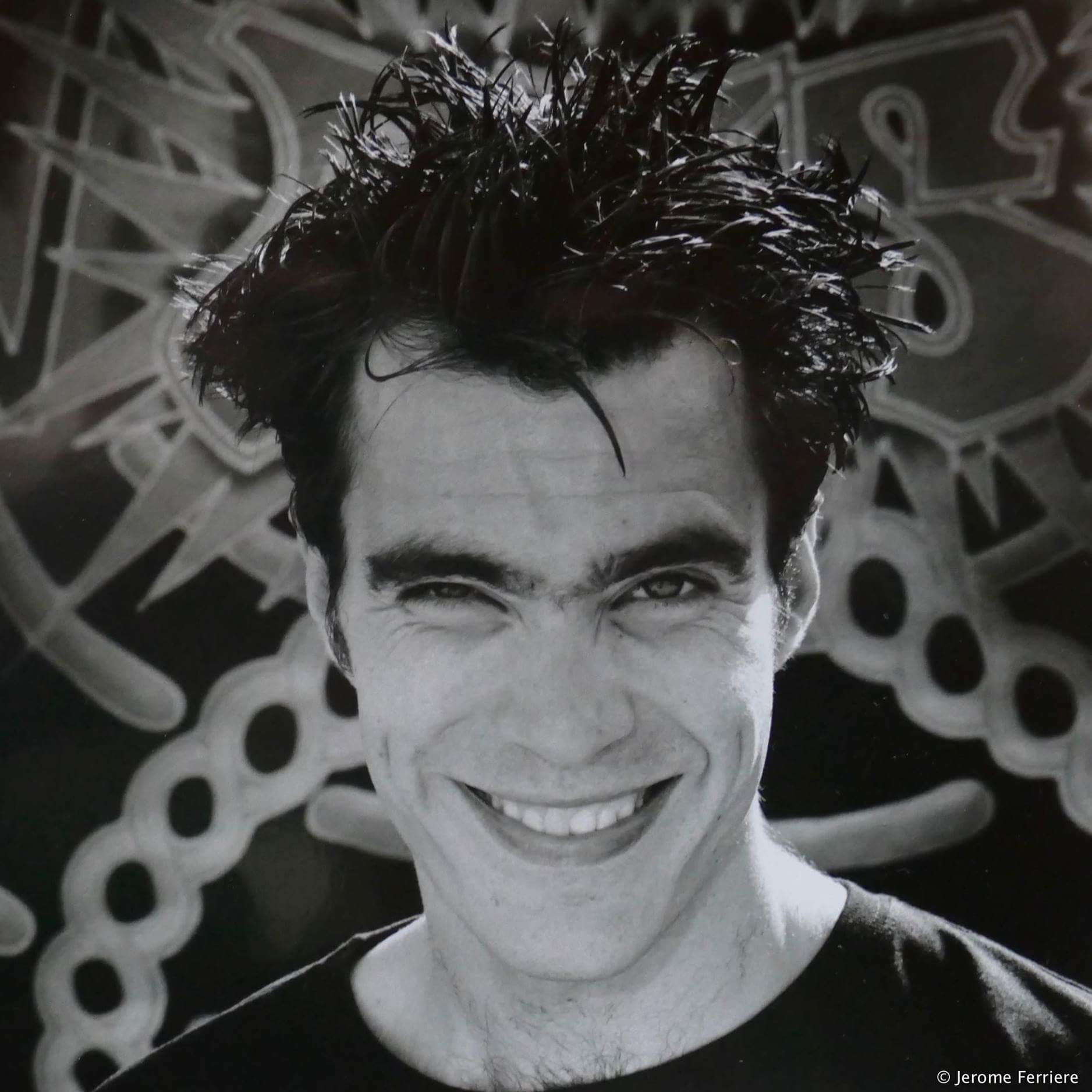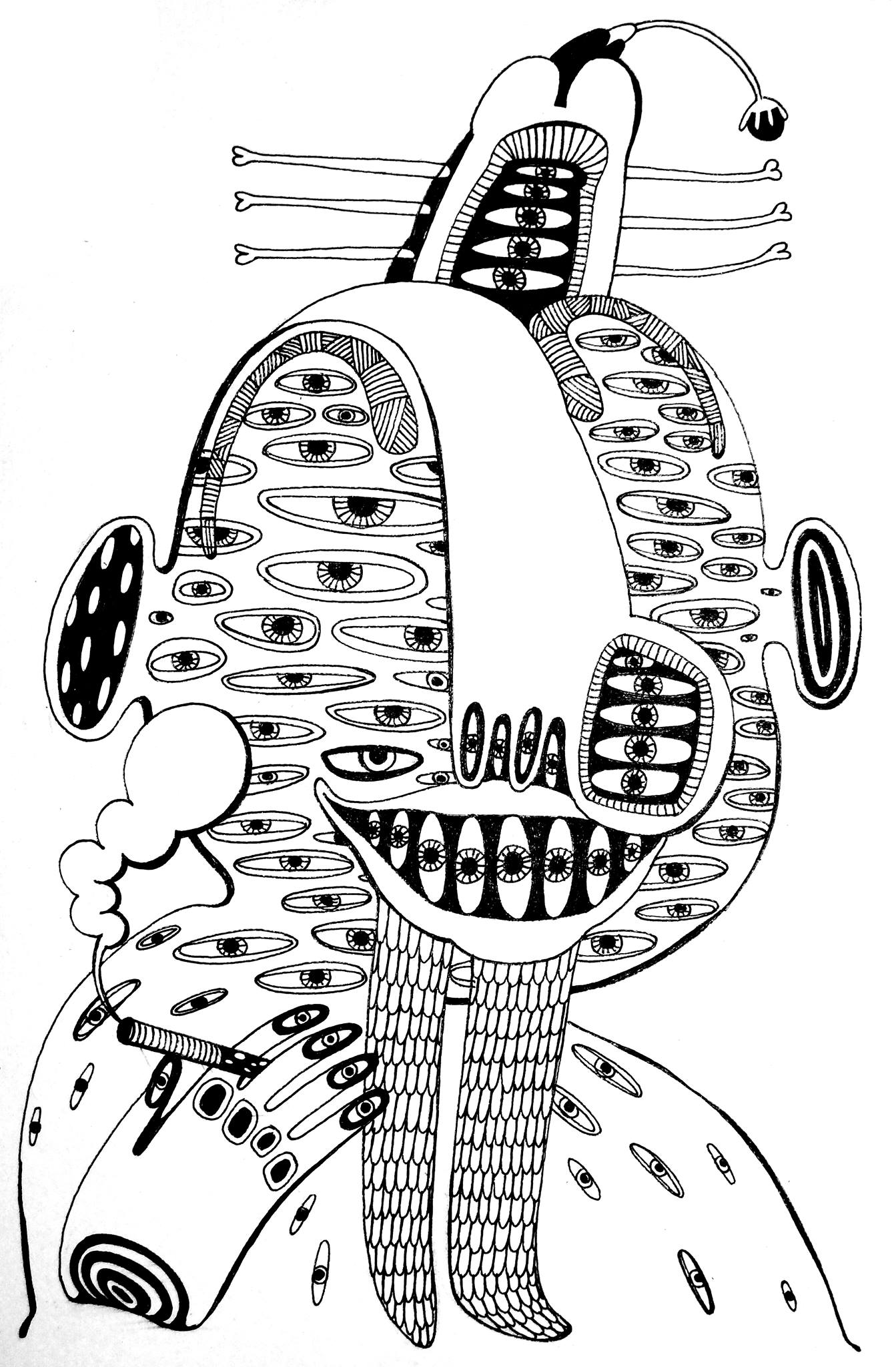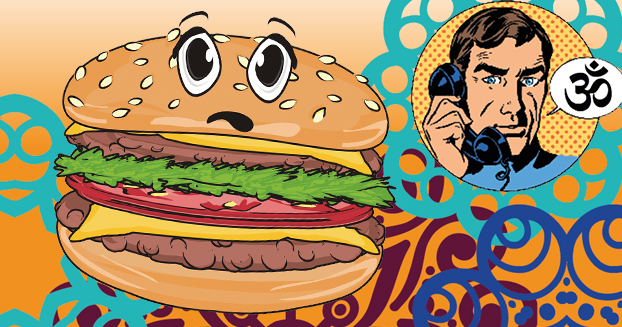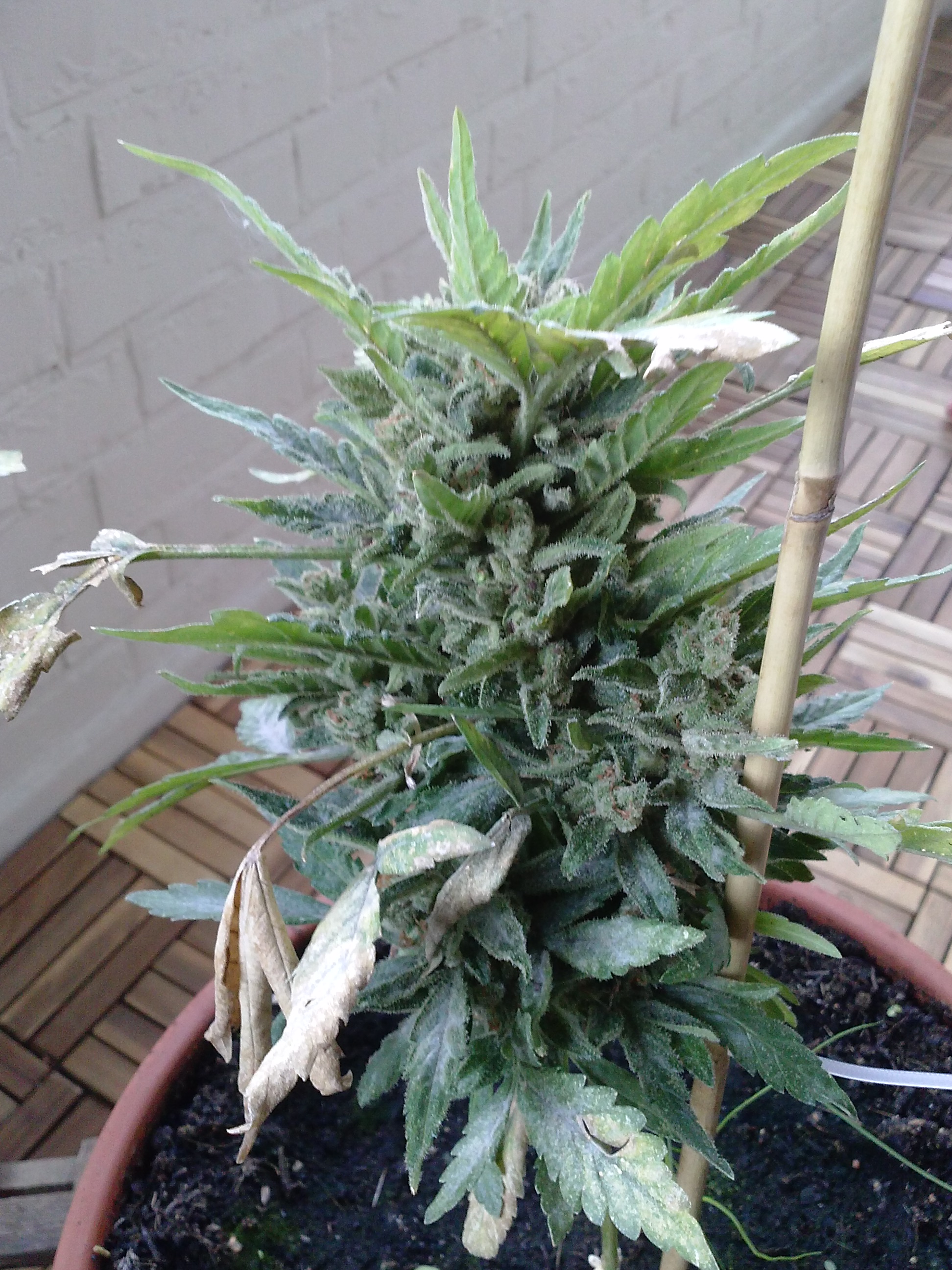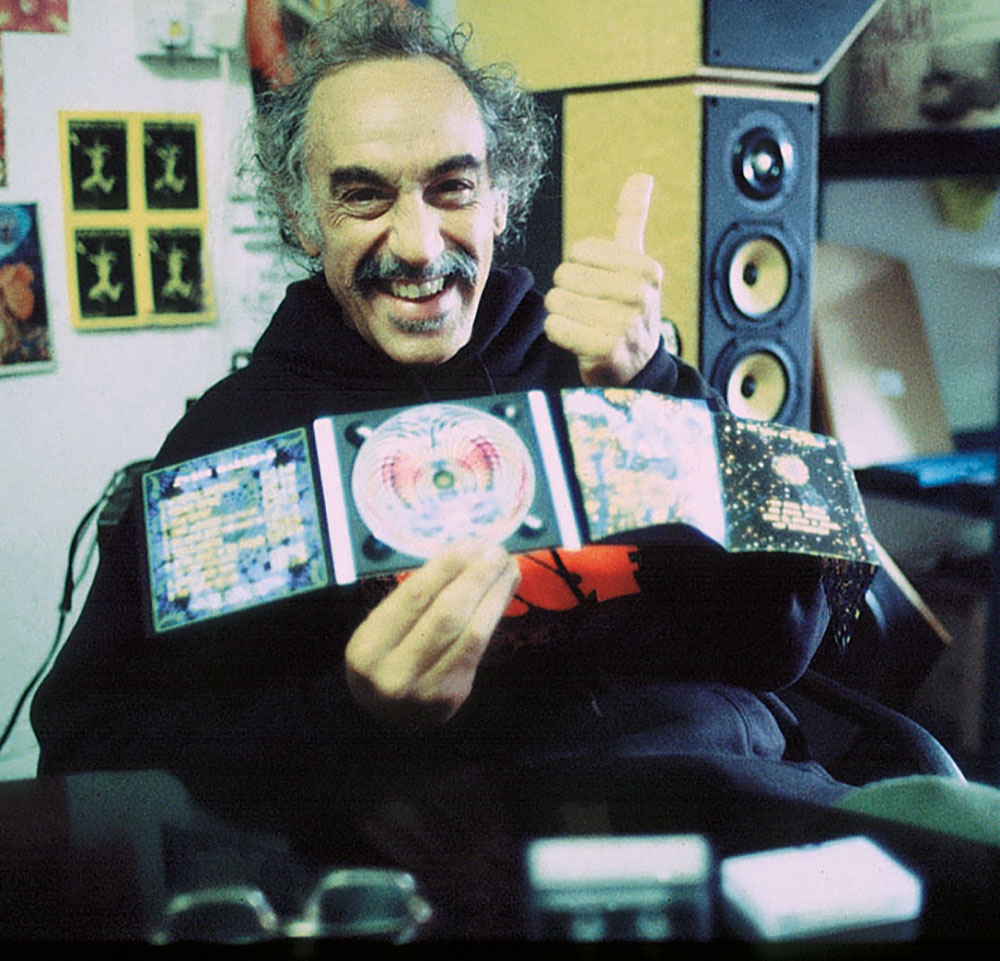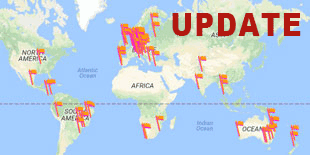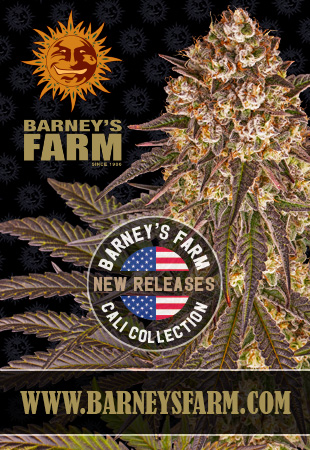This is an exclusive preview from the fantastic GOABOOK.
How it all started (written by Chicago)
The beginning
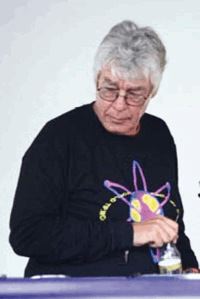 Well, it all started in the Goa 1983-84 season, the first electronic „Goa’ music, that is…up until then, and through that season, we were tripping ‘n dancing all night to „normal’ music – -Talking Heads „Burning Down The House’, Billy Idol „White Wedding’ and „Rebel Yell’, The Cult „Born To Be Wild’, Tina Turner. But there were two „crossover’ traxx – -Sven Väth’s „Electrica Salsa’ (a-hah,a-hah) and the transvestite Divine’s „Step By Step’. They were the first electronic traxx and we all went crazy for them. They were played at almost every party, and created a very special electricity on the dancefloor.
Well, it all started in the Goa 1983-84 season, the first electronic „Goa’ music, that is…up until then, and through that season, we were tripping ‘n dancing all night to „normal’ music – -Talking Heads „Burning Down The House’, Billy Idol „White Wedding’ and „Rebel Yell’, The Cult „Born To Be Wild’, Tina Turner. But there were two „crossover’ traxx – -Sven Väth’s „Electrica Salsa’ (a-hah,a-hah) and the transvestite Divine’s „Step By Step’. They were the first electronic traxx and we all went crazy for them. They were played at almost every party, and created a very special electricity on the dancefloor.
The next season was only electronic dance music at all the parties, the tidal wave had hit! Then we called it „Techno Music’ for years as it used the modern new technology of synthesizers and computers. In the 90s, a new category of dance music emerged, called „Tekno’, a different style of electronic dance music. So we suddenly had to change the name of our music, from Techno it became „Trance’ music, also called Goatrance and Psychedelic/Psytrance). As Gil said, it was known as „Wave Music’, „Body Music’, „Euro Beat’. It was a super-high and halcyon time – a whole new world of music, and dancing – a whole new party experience opened up.
The magic
This was also the beginning of „dark’ music during the nights. There was a core-group of DJs who took control of the party scene (the legendary and magical French Laurent, who put together a full „story’ every party. He took you on a special journey of music and emotions. (French Fabian, Canadian Dr. Bobby, U.S. Gil and Swiss Rudy, to mention a few others), and insisted on a new concept for the night. Instead of just dancing under the moon and stars, having fun, the idea became to take a trip into and through the Dark Side through the night and be delivered into the Light in the morning, switching then to fun, happy, uplifting music – the „morning music’ concept was born.
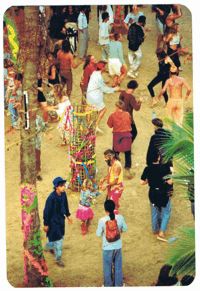 Dr. Bobby also recently told me that yes, these DJs did have an unspoken contest between them at night, who could play the scariest and maddest music, with trax full of car crashes, people screaming, glass shattering, machine guns and explosions, beasts and monsters roaring etc. Personally, I and many others were against this, as many people were sensitive while tripping, and got totally freaked out. It led to many serious bad trips. Many of us just wanted to have fun tripping and dancing all night with our friends rather than having to go into the dark side. But we were not spared.
Dr. Bobby also recently told me that yes, these DJs did have an unspoken contest between them at night, who could play the scariest and maddest music, with trax full of car crashes, people screaming, glass shattering, machine guns and explosions, beasts and monsters roaring etc. Personally, I and many others were against this, as many people were sensitive while tripping, and got totally freaked out. It led to many serious bad trips. Many of us just wanted to have fun tripping and dancing all night with our friends rather than having to go into the dark side. But we were not spared.
The mornings were sublime, wonderful uplifting music, full of emotions – we all remember crying in front of the speakers, tears of joy, with goosebumps, shivers…ecstasy – a strong feeling of one-ness and togetherness with each other and the magnificent nature surrounding us. It was most powerful! But that sweet, heart-touching kind of morning music is long-gone now – called „fluffy’ today, it is blast full-power right on through, from night through dawn through sunrise, no let-up, „take no prisoners’!
Until around 2000, there were parties every couple of nights all season long every winter in Goa, then also on Ibiza island every summer. Many of us for years (26 years for me, now) spent the winters partying in Goa, then everything shifted to Ibiza for the summers. What days they were – there was always a special atmosphere in the air, everyone getting ready for a party, the excitement building, then feeling so happy at the party, folowed by being so happily wasted for a couple of days after the party, and the cycle began again. What a magical existence!
And the parties were all free parties back then, it only cost a few 100 Dollars to stage a party, and there was no admission charge, and all the DJs played for free, just for the fun of it all. It wasn’t until the mid 90s that business-minded promoters came in, realizing that there was money to be made, and started charging admission fees and paying the DJs – the start of commercial parties in our scene.
The People
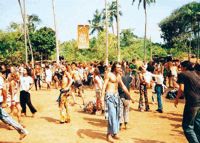 Goa was full of colourful characters in those days – Acid Eric, 8-Finger Eddie, Mescaline Bobby, Kenny Potter and The Birmingham Boys, Spanish Wildman Alejandro, Johnny Cairo, Pisco and lots of famous drug dealers and flamboyant characters. And it was all so free back then, especially for the drug scene, as India actually had no real drug laws all through the 80s. I think it was in 1989 when the USA forced all the Asian drug-countries – Thailand, Burma, Nepal, India, Pakistan, Afghanistan – to enact new strict drug laws in exchange for billions in aid to them from the U.S. But, until then, we could merrily smoke and trip and mushroom and whatever just about anywhere, and especially at the parties – it was all legal then!
Goa was full of colourful characters in those days – Acid Eric, 8-Finger Eddie, Mescaline Bobby, Kenny Potter and The Birmingham Boys, Spanish Wildman Alejandro, Johnny Cairo, Pisco and lots of famous drug dealers and flamboyant characters. And it was all so free back then, especially for the drug scene, as India actually had no real drug laws all through the 80s. I think it was in 1989 when the USA forced all the Asian drug-countries – Thailand, Burma, Nepal, India, Pakistan, Afghanistan – to enact new strict drug laws in exchange for billions in aid to them from the U.S. But, until then, we could merrily smoke and trip and mushroom and whatever just about anywhere, and especially at the parties – it was all legal then!
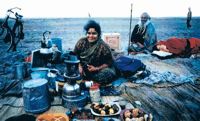 And there were no „no topless/nudity’ laws then, so every day at the beach many of us were naked, the girls topless, a fun smoking and tripping scene at all the beaches each day! Party all night, beach all day – life was a beach. The big bands in the 80s, there was Front 242, Nitzer Eb, Yello, Skinny Puppy and many others experimenting and forging new electronic sound-styles. In the 90s until now some of the major players were T.I.P./The Infinity Project (Raja Ram and Graham Wood), X-Dream, Juno Reactor, Eat Static, Man With No Name, Doof, Green Nuns of the Revolution, Astral Projection, Hallucinogen, Total Eclipse, GMS (Growling Mad Scientists), Infected Mushroom, Astrix, 1200 Micrograms , Eskimo. Each of these bands had their own special unique style, all producing a series of amazing traxx that conjured up extra-special vibrations and magical moments on the dancefloors all over the world.
And there were no „no topless/nudity’ laws then, so every day at the beach many of us were naked, the girls topless, a fun smoking and tripping scene at all the beaches each day! Party all night, beach all day – life was a beach. The big bands in the 80s, there was Front 242, Nitzer Eb, Yello, Skinny Puppy and many others experimenting and forging new electronic sound-styles. In the 90s until now some of the major players were T.I.P./The Infinity Project (Raja Ram and Graham Wood), X-Dream, Juno Reactor, Eat Static, Man With No Name, Doof, Green Nuns of the Revolution, Astral Projection, Hallucinogen, Total Eclipse, GMS (Growling Mad Scientists), Infected Mushroom, Astrix, 1200 Micrograms , Eskimo. Each of these bands had their own special unique style, all producing a series of amazing traxx that conjured up extra-special vibrations and magical moments on the dancefloors all over the world.
The BPM Story
Until about the mid-90s, the beats per minute were much slower, 120 – 125 bpm was common through the 80s, and 140 was a fast track. Then in the early 90s there was a sudden switch, a big speed-up and suddenly 140 was a slow track and 145 became the ideal dancing bpm. Which is better? Well, below 140, you dance and move your body in a different way, more expressive. Some say it has more hip movement, a more fluid body motion. But there is a special power and dynamism in dancing at 145 bpm, a different excitement level than at the slower bpms. Both have their magic.
The SFX Years
Also around the same time as the bpms speeded up, it became a fashion for some years to make traxx with no melody features, instead using only sound-effects on the top of the bass’n’kick-drum bottoms. Producers who had no musical training could now come in, lay down a strong dancey bottom, and simply add a variety of SFX on the tops. Riktam and Bansi of GMS were the first DJs I heard play an entire set of only SFX traxx (late 90s) – not a single melodic track. And then it became a trend, a force, for about five years at the parties, it took over. But it ran its course, there are still some traxx like that now, but not like it was then.
From Hippie Dress To Fluoro
In the 80s, there were still people who hand-made special fantasy party outfits for every party, much of it hippie-inspired, flowing dresses, long scarfs, turbans and headgear, make-up. Then in the late 80s fluoro party clothes arrived on the scene, psychedelic patterns on synthetic leggings and tops – a whole new fashion line had started. It was everywhere, day and night and not just at the parties. It heightened the psychedelic atmosphere of our scene. But today these clothes are virtually gone, most people at the parties now just wear normal clothes. There are still a few of us holding out and wearing psy clothes – especially in Goa, but not in the rest of our Trance world.
The Hits
 For almost the first 20 years, every season had „its hits’, killer traxx that were played at most parties and by most of the DJs, right through the season. DJs weren’t afraid to play them because other DJs were playing them, they all wanted to play these special traxx, because we all looked forward to these highlite traxx at every party. We all knew the names of these traxx and the bands that made them. Each time they were played they created an explosion of NRG, a special magic on the dancefloor. There are still some hits today that you hear fairly often, but now most DJs want to be unique and play traxx no-one else is playing. It was a bonding experience, our love for these hits helped create a sense of unity among the party goers. It’s sad this has been lost.
For almost the first 20 years, every season had „its hits’, killer traxx that were played at most parties and by most of the DJs, right through the season. DJs weren’t afraid to play them because other DJs were playing them, they all wanted to play these special traxx, because we all looked forward to these highlite traxx at every party. We all knew the names of these traxx and the bands that made them. Each time they were played they created an explosion of NRG, a special magic on the dancefloor. There are still some hits today that you hear fairly often, but now most DJs want to be unique and play traxx no-one else is playing. It was a bonding experience, our love for these hits helped create a sense of unity among the party goers. It’s sad this has been lost.
Party Atmosphere Change
In the first ten years or so, the budget for every party included money for „lights’ as well as the sound system. Colorful „fairy-lights’ were draped in artistic ways over the dance floor, circled up the palm trees. This created a magical atmosphere and allowed everybody to see each other. So it was much more social through the night. Everyone could smile at each other, dance together, you could watch all the sexy girls and guys dancing and watch all the fun and action. But then the concept of the blacklight party came along. This especially accompanied the „dark music’, and a trip into „the dark side’. But it greatly changed the atmosphere. Now you only see people’s teeth and eyes glowing, it looks very weird and is much less social. You go more into your own private world on the dancefloor. And it’s much harder to find your friends…
So, that’s a brief „history’ of Goa and the party scene through my eyes. The glory-days of mad, wild, full-freedom, all-night „acid-parties’ in Goa are now gone, not being allowed anymore by the government. We were blessed to have had them all those years, what an amazing experience! But Goa and the Goa experience will go on. You still have dancing and partying going on every day, but only until 10 p.m., sometimes stretching until 11 or 12 p.m. But we always said that the parties were like the icing on the cake but „the cake’ – Goa itself – is still there, still magic, still wondrous, still very free compared to the rest of the world, still very open, still quite „experimental’, still so very international with like-minded people from all over the world – coming to an experience. It’s a special „alternative life-style’ for those of us who want to live a different way than the „normal-life’ way. And the beat goes on!
How I got into Psytrance (written by Raja Ram)
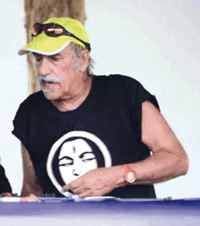 My Friend Paul kidnapped me from London and took me to his house in Anjuna Beach Goa for New Years Eve 1989. He said he was going to take me to a party in the jungle, starting at 4 o’clock in the morning to avoid the police. I objected being tired and old and I didn’t feel like doing anything. But he forced me into a taxi and we drove to the edge of a vast valley overlooking the Arabian sea. It was a marvellous full moon night, stars glittering in the dark, blue sky, and there in the distance we saw the lights and the dust down below. We headed on, carefully making our way down the slopes and arrived at an encampment of coconut trees and a dozen ladies serving chai on mats – and the music you could hear through the ground. I had never heard anything like it before – a new form of psy-disco?
My Friend Paul kidnapped me from London and took me to his house in Anjuna Beach Goa for New Years Eve 1989. He said he was going to take me to a party in the jungle, starting at 4 o’clock in the morning to avoid the police. I objected being tired and old and I didn’t feel like doing anything. But he forced me into a taxi and we drove to the edge of a vast valley overlooking the Arabian sea. It was a marvellous full moon night, stars glittering in the dark, blue sky, and there in the distance we saw the lights and the dust down below. We headed on, carefully making our way down the slopes and arrived at an encampment of coconut trees and a dozen ladies serving chai on mats – and the music you could hear through the ground. I had never heard anything like it before – a new form of psy-disco?
Contemporary electronic dance music for adults coming out of the enormous speakers on the beach and the lights were black fluoro lit, paintings everywhere, string sculptures in all designs. The tree trunks were painted fluorescent and everything was glowing, while hundreds of dancers raised the dust, the spirits of all. The vibe was high, the music perfect, a new tribe had been formed gradually. Party people from all over the world wanting to find the sacred place together, the refuge of love and understanding and peace and joy through dance and friendship.
The music became God and we became the music. It was a spiritual ceremonial happening – the thing I had been secretly searching for all my life. The DJs – often incognito – played the latest far out sounds on the planet behind the decks. Everything was done and mixed on DAT tapes – that pre-technological breakthrough. Of course we wanted to know who made the music, where it was from, how did they make this music, did they create the music on drugs? These were all questions that became part of the musical spiritual detective hunt. We wanted to find out all about it and then eventually make it ourselves which is what happened later.
There were so many special people in Goa – you just had to be there. Goa Gil and 8-finger-Eddie, Acid Eric, Mushroom Jack. The names give an indication of our lifestyles. It was the golden era of Goa. Some years later it got worse when the police chased us. I got locked up in Jail after one party I had at my house on the beach. In the morning they fined me five pounds and we went home. But the parties were everything. The flaming torch had been lit and there was no turning back and so we had hundreds of all night gatherings and some day parties as well.
But who paid for them and who arranged the sound systems remained a mystery – some sort of human collective consciousness. And we bow to all those good souls who have passed on and salute all the great ones who still are with us. Fun rules and parties will never stop. There is one going on right now and I finish with the quote ‘Your body is a temple, but it is also a nightclub’. Rock on to the future, it’s just starting now – and aren’t we lucky?
This article was taken from the Goa Book
You can buy it here in the in the mushroom media shop
About the book
This unique book about the Goatrance movement is an anthology of the international Goa and Psytrance generation. It is the first book that describes the scene as a whole. The articles are written by 41 insiders of the international Psytrance scene from five continents. The pictures originate from some of the best photographers globally. The book highlights the evolution of the scene in the last 20 years and looks ahead to the future. The book comes along with a DVD and a poster, together as deluxe version, and both book and DVD will also be available separately. Both products are contemporary documents of a generation and photographic and filmic masterpieces.
Table of Contents
History and Music
1. Goa – The Roots of Psychedelic Trance Goa Gil
2. History of a Colourful Culture Chicago/Raja Ram
3. Magical spots Pascal Querner
4. The Evolution of Psytrance Music Kai Mathesdorf
5. The Psytrance Labels Kai Mathesdorf
6. The Cosmic Octave Hans Cousto
7. The “Goa-Tribe“ – Culture or Subculture? Wolfgang Sterneck
8. Cybertribes: Projects against the System Wolfgang Sterneck
Culture, Spirituality and Drugs
9. Spirituality and Shamanism Christian Rätsch
10. Anarchy with Codes Tom Rom
11. Psytrance Media Sam Chaishop
12. Ecology and Environmental Consciousness Tom Rom
13. Goa-culture, Drugs and the Expansion of the Mind Roger Liggenstorfer
14. Cosmic Vibe: The Total Eclipse Festivals Graham St John
15. The Solipse Festivals William Miller/Hannah Cleaver
Art and Performances
16. Decoration and Design Ananto/Julia Werner
17. Visions and Psychedelic Art Martina Hoffmann/Robert Venosa
18. Visuals – Moving Minds El Geko/Omananda
19. Dance in Trance Marc Brouard
20. Performances in Colours Pascal Querner
21. Highway to Paradise Pascal Querner
22. Beautiful People Pascal Querner
23. Psyfashion and Style Katarina Bartovicova
A Global Culture
24. Goa in Germany Liese
25. Switzerland Juerg Schmid
26. Austria Tom Rom
27. Trance in the UK Gregory Sams/Charles de Ledesma
28. Trance in Sweden Bakke
29. Trancerussia Anchor/Unitone
30. Trance in Israel Roy Engel/Lior Perlmutter/Avi Nissim
31. Goa Culture in Japan Kei Fujishiro/Jun Inada
32. Psytrance Center Thailand Tom Rom
33. Trance in India Today Ma Faiza
34. Psytrance in Brazil Kranti Pessoa
35. Doof in Downunder Albert Moses
36. Psychedelic Trance – A Part of South African History Dave Mac
37. Voov-Experience – Vuuv-Festival Scotty/Amrisha/Andreas Mueller
38. The Boom Festival Artur da Silva
39. Ozora Festival Balasz Verebes
40. Universo Paralello Swarup
41. Psytrance @ Burning Man Peter Ziegelmeier/Brad Olsen
Reflections
42. Critical Thoughts and Future Tom Rom
Publisher´s Preface: Roger Liggenstorfer
Editor-in-chief’s Preface: Tom Rom
Photo editor-in-chief’s Preface: Pascal Querner
Publisher: Nachtschatten Verlag AG


